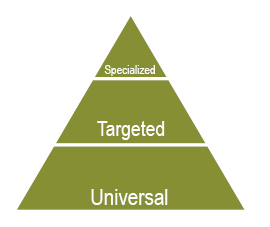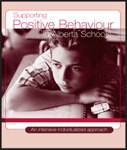
|
Universal Supports benefit all students
- Communicate clear expectations about what personal belongings are appropriate to bring to school, when they might be used and how they might be stored. Establish a routine for how to handle items that are brought to school that are inappropriate.
- Develop effective classroom routines for storing and retrieving personal belongings, such as labelling coat hooks and boot shelves with student names, providing labelled storage bins for extra school supplies or reading books.
- Model the “everything has a home” strategy of managing personal belongings by designating spaces in the classroom for specific supplies and teaching resources, clearly labelling these areas and prompting their use (e.g., “Please return math cubes to math shelf.”).
- Use the think aloud strategy at teachable moments throughout the school day by providing a verbal explanation and demonstration of how you keep track of your own belongings (e.g., “I need to gather up all the project plans I will review tonight. I’ll put them in this special yellow folder so I will remember where they are.”).
- Encourage students to display their names prominently on all personal supplies and items of outdoor clothing. If necessary, make time at the beginning of the school year to do this.
- Organize desks and lockers with labels and designated places for certain items. If necessary, provide additional storage for extra supplies.
- Establish a regular time for all students to clean and organize their desks and lockers.
- Establish classroom and/or school lost and found boxes and have student volunteers do regular sorting (e.g., on a weekly basis) and return labelled items to owners, and organize and display unclaimed items (e.g., found mittens pinned to clotheslines in hallway) for owners to claim.
- Post visual reminders of the importance of taking responsibility for your own personal belongings. When appropriate, collaborate with students to develop these visual reminders.
- Use descriptive feedback to reinforce individual students, groups of students and/or the whole class when they demonstrate they are organizing and managing their personal belongings.
|
|

|
Targeted Supports benefit students with more specific needs
- Pair individual students with positive peers who can serve as role models and provide support in managing personal belongings. Rotate these peers at regular intervals throughout the school year.
- Provide proximity by positioning yourself nearby individual students who may require support and encouragement in managing personal belongings at specific points in the school day.
- Work with individual students to develop low-key cues and prompts that you can use to remind them to organize and keep track of their own belongings.
- Provide personalized checklists with visuals that individual students can use to ensure they have all their personal belongings when they leave home each day. Collaborate with parents and encourage them to use a similar strategy at home to ensure students bring needed items (e.g., lunch bag, water bottle, homework book, permission slips) to school each day.
- For students who have chronic difficulties with keeping track of their personal belongings, develop self-monitoring strategies students can use to reflect on and track their progress on organizing and keeping track of their personal belongings.
|
Parents know their children well and can offer insights on how to support
their social and emotional well-being. There is strength in collaborating
on strategies that could be used at home, at school and in the community.
|

|
Specialized Supports benefit the small number of students with sensory, physical, cognitive or behavioural needs that require intensive, individualized interventions
- In exceptional cases, an individual student may need 1:1 adult support to facilitate participation in classroom routines. The adult providing this 1:1 should collaborate with the student's learning team to identify and facilitate opportunities for the student to actively be involved in keeping track and making decisions about his or her own personal belongings. This could include such things as having students review personalized checklists before leaving for home and indicating which items they need to take home and which items should remain at school.
|
|








